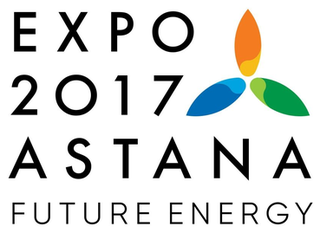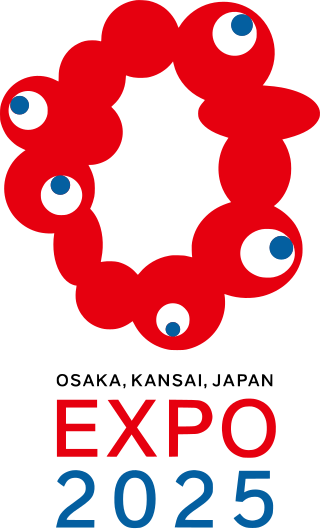Related Research Articles

Lille is a city in the northern part of France, in French Flanders. On the river Deûle, near France's border with Belgium, it is the capital of the Hauts-de-France region, the prefecture of the Nord department, and the main city of the European Metropolis of Lille.

A world's fair, also known as a universal exhibition or an expo, is a large global exhibition designed to showcase the achievements of nations. These exhibitions vary in character and are held in different parts of the world at a specific site for a period of time, typically between three and six months.

The Bureau international des expositions is an intergovernmental organization created to supervise international exhibitions falling under the jurisdiction of the Convention Relating to International Exhibitions.

The Exposition Universelle of 1855, better known in English as the 1855 Paris Exposition, was a world's fair held on the Champs-Élysées in Paris, France, from 15 May to 15 November 1855. Its full official title was the Exposition Universelle des produits de l'Agriculture, de l'Industrie et des Beaux-Arts de Paris 1855. It was the first of ten major expositions held in the city between 1855 and 1937. Nowadays, the exposition's sole physical remnant is the Théâtre du Rond-Point des Champs-Élysées, designed by architect Gabriel Davioud, which originally housed the Panorama National.

Roubaix is a city in northern France, located in the Lille metropolitan area on the Belgian border. It is a historically mono-industrial commune in the Nord department, which grew rapidly in the 19th century from its textile industries, with most of the same characteristic features as those of English and American boom towns. This former new town has faced many challenges linked to deindustrialisation such as urban decay, with their related economic and social implications, since its major industries fell into decline by the middle of the 1970s. Located to the northeast of Lille, adjacent to Tourcoing, Roubaix is the chef-lieu of two cantons and the third largest city in the French region of Hauts-de-France ranked by population with nearly 99,000 inhabitants.

The Exposition Internationale des Arts et Techniques dans la Vie Moderne was held from 25 May to 25 November 1937 in Paris, France. Both the Palais de Chaillot, housing the Musée de l'Homme, and the Palais de Tokyo, which houses the Musée d'Art Moderne de la Ville de Paris, were created for this exhibition that was officially sanctioned by the Bureau International des Expositions. A third building, Palais d'Iéna, housing the permanent Museum of Public Works, which was originally to be among the new museums created on the hill of Chaillot on the occasion of the Exhibition, was not built until January 1937 and inaugurated in March 1939.

The French Industrial Exposition of 1844, held in a temporary structure on the Champs-Élysées in Paris, was the tenth in a series of eleven French national industrial expositions held since 1798 to encourage improvements in progressive agriculture and in technology.

The Exposition Universelle of 1867, better known in English as the 1867 Paris Exposition, was a world's fair held in Paris, France, from 1 April to 3 November 1867. It was the second of ten major expositions held in the city between 1855 and 1937. A number of nations were represented at the fair. Following a decree of Emperor Napoleon III, the exposition was prepared as early as 1864, in the midst of the renovation of Paris, marking the culmination of the Second French Empire. Visitors included Tsar Alexander II of Russia, a brother of the King William and Otto von Bismarck of Prussia, Prince Metternich and Franz Josef of Austria, Ottoman Sultan Abdülaziz, and the Khedive of Egypt Isma'il.
Japan Expo is a convention on Japanese popular culture – the largest of its kind in the world – taking place in Paris, France, although it has branched out into a partnership festival – Kultima – and expanded to include some European and US pop culture as well. It is held yearly at the beginning of July for four days in the Paris-Nord Villepinte Exhibition Center. The attendance has increased steadily over the years, with 2,400 visitors welcomed in the first edition in 1999 and more than 252,510 for the 2019 edition.

The Brussels International Exposition of 1935 was a world's fair held between 27 April and 6 November 1935 on the Heysel/Heizel Plateau in Brussels, Belgium.

Expo 2017 Astana was an International Exposition which took place from June 10 to September 10, 2017 in Astana, Kazakhstan. The expo's theme was "Future Energy", and aimed to create a global debate between countries, nongovernmental organizations, companies and the general public on the crucial question: "How do we ensure safe and sustainable access to energy for all while reducing CO2 emissions?"

The International Association of Horticultural Producers is a trade association dedicated to promoting horticultural producers and held the international garden / flora festivals or expositions.
JonOne, also known as Jon156, is an American graffiti artist. Originally from New York, he lives and works in Paris.
Ducks Scéno is a French company based in Villeurbanne specializing in scenography and museography.

Expo 2025 is an upcoming World Expo organised and sanctioned by the Bureau International des Expositions (BIE), which will be held in Osaka, Japan. It will take place for six months during 2025, opening 13 April 2025 and closing 13 October 2025. It will be held for 184 days This will be the third time Osaka hosts a World Expo, having previously hosted Expo 1970 and Expo 1990. The event will return to its traditional 5-year scheduling cycle after the Expo 2020 was delayed to 2021 and 2022 due to the COVID-19 pandemic. The projected visitor count is approximately 28 million.

Expo 2023 would have been a specialized exhibition that was scheduled to be held in 2023 in Buenos Aires, Argentina. The Bureau International des Expositions (BIE) awarded Buenos Aires as the host on November 15, 2017. This was to have been the first time that a BIE Expo was held in Argentina, and the first in the country since BIE's creation. In October 2020, Argentina announced that due to the COVID-19 pandemic and the ensuing financial crisis, the Expo would not be held as planned in 2023.
The International Textile Machinery Association (ITMA) exhibition is an event in the textile industry, where manufacturers from around the world gather to showcase their latest developments, innovations, and advancements in textile machinery. It serves as a platform for professionals in the textile supply chain to gain insights into the latest technological advancements and new machinery and devices that can enhance textile manufacturing processes, including the production of fibers, yarns, and the processing and finishing of textile products.
References
- 1 2 "1951 Lille". www.bie-paris.org. Retrieved 2017-12-27.
- ↑ "Livre d'or de l' Exposition textile internationale, 1951". bibliotheques-specialisees.paris.fr. Retrieved 27 December 2017.